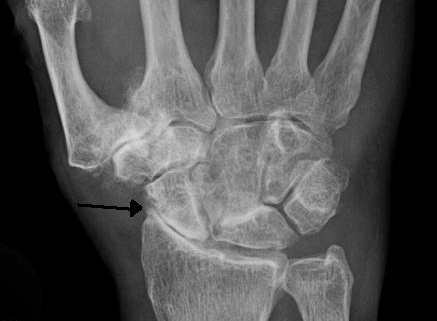
Wrist Joint Osteoarthritis
Overview
Osteoarthritis (OA) is a common condition impacting millions across the globe, and can painfully affect any joint in your body, including your wrists. Wrist joint osteoarthritis specifically targets the cartilage within the wrist, which facilitates smooth movement of the bones. When this cartilage deteriorates, it can cause considerable discomfort, stiffness and reduced flexibility in patients, which can make even everyday tasks seem challenging.
Types
Osteoarthritis can typically be categorised into two types, primarily: Primary and Secondary. The former occurs with natural aging and wear and tear of the joints, while the latter is more specifically triggered by an injury or some underlying disease affecting the joint.
Causes
Wrist joint osteoarthritis is primarily caused by the wear and tear of the cartilage in the wrist joint over time. Some risk factors include:
-
- Age: This condition more frequently affects those above the age of 50.
-
- Genetics: In some cases, a patient just might be genetically predisposed to develop OA.
-
- Injury: An injury to the wrist can increase the chances of developing OA in the joint later in life.
-
- Obesity: Excess weight can put additional strain on joints and trigger OA.
Symptoms
The signs of wrist joint osteoarthritis can vary greatly among individuals. Some common symptoms include:
-
- Pain in the wrist especially during or after use
-
- Limited range of motion or stiffness
-
- A grating sensation during movement
-
- Swelling due to inflammation
Diagnosis
An accurate diagnosis of wrist joint osteoarthritis usually involves a physical examination by a doctor, and a detailed discussion of the symptoms and medical history. Imaging tests like X-rays or MRI may also be used to gauge the extent of the condition.
Treatment Options
While there’s currently no cure for OA, numerous treatments are available to manage the symptoms and improve the quality of life for patients. These include:
-
- Physical Therapy: Exercises that strengthen the muscles around the wrist joint can often help reduce pain and improve function.
-
- Medications: Over-the-counter pain relievers like acetaminophen or nonsteroidal anti-inflammatory drugs (NSAIDs) can often help alleviate discomfort.
-
- Injections: In certain cases, your doctor might recommend corticosteroid or hyaluronic acid injections.
-
- Surgery: In severe cases where other treatments aren’t effective, surgical intervention may be considered.
Living With Wrist Joint Osteoarthritis
Although living with OA can be challenging, taking proactive steps towards managing your condition can significantly improve your quality of life. Such steps include:
-
- Maintaining a healthy weight to minimize stress on your joints
-
- Strengthening exercises and flexibility routines
-
- Proper use of medications as prescribed by your doctor
-
- Using assistive devices to reduce strain during daily tasks
When to Seek Help
If you experience severe wrist pain, loss of movement, or if your wrist joint appears deformed, you should seek immediate medical attention. Additionally, prolonged swelling, redness, warmth or presence of a fever – these could all potentially signal a more serious condition.
